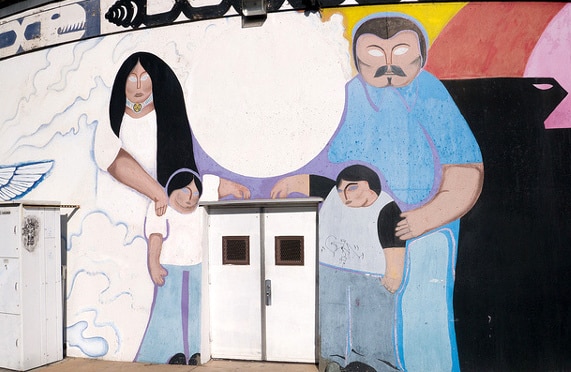
Sad to say, the chronicle of obesity, race, and ethnicity in the U.S. is far from over. One aspect is media influence. A lot of people, with differing biases and issues, are interested in the effects of advertising on various populations.
By 2015, it was already known that black and Hispanic children and teens were exposed to a lot more junk food promotion than their white counterparts. This would include TV ads on programs and stations they were more likely to watch, and things like billboard and bus bench ads in neighborhoods. Advertising works, which is why corporations spend millions on it.
Experts from the Rudd Center took a very close look at companies that had spent at least $100 million on advertising in 2013. These amount to 26 corporations including restaurant chains and purveyors of junk food and beverages. Of the amount spent on TV advertising, 40 percent of it touted fast food, with another bundle of cash going for candy and snack ads.
Needless to say, what they all have in common is inadequate nutrition. Not surprisingly, the researchers concluded there is a strong likelihood that racially and ethnically targeted marketing contributes to health disparities, including the variations in obesity rates.
Salud America! is a national nonprofit organization of “moms and dads, providers, researchers, and community and school leaders” concerned about the high obesity rate and other health disparities that affect the Latino population. It is aided by UT Health San Antonio and the Robert Wood Johnson Foundation. Salud America! focuses on three main areas of concern: Healthy and Cohesive Cultures, Healthy Families and Schools, and Healthy Neighborhoods and Communities. Much of the material is published online in both English and Spanish.
In 2016, nearly 40 percent of Latino kids in America were overweight or obese (compared to less than 30 percent of white kids), and a report from the organization emphasized the importance of exercise and physical activity. Great advice, of course, but hard to follow in segregated, underserved neighborhoods. The report also noted that 81 percent of predominantly Latino neighborhoods lacked spaces and opportunities for physically active recreation, and suggested that there is probably a connection.
How does a park or a playground, or community center happen? Money is always an issue, of course, and ethnically intense neighborhoods tend to be low-income. There has to be available land, and someone has to buy or lease it. Infrastructure has to be built or refurbished, and maintained. The utilities need to be turned on and the bills paid. Trash disposal has to be provided. Liability insurance needs to be purchased and kept up. Some kind of security system should be in place.
Parking has to be adequate, or the adjacent neighbors might decide they care less about the childhood obesity epidemic than about strange cars blocking their driveways. Visitors need a place to change clothes and leave belongings. People need to be hired to take care of the operation on a daily basis, which is probably the easiest part of setting things up, in a neighborhood where great jobs are not overly abundant.
Salud America! also addresses other matters, like the food desert phenomenon, which we will be talking about soon.
Your responses and feedback are welcome!
Source: “Food advertising targeted to Hispanic and Black youth: Contributing to health disparities,” UConnRuddCenter.org, August 2015
Source: “About,” Salud-America.org
Source: “The Insidious Reason Latino Kids Are More Obese Than Their Peers,” TakePart.com, 01/12/16
Photo credit: Jay Galvin on Visualhunt/CC BY

 FAQs and Media Requests:
FAQs and Media Requests: 











